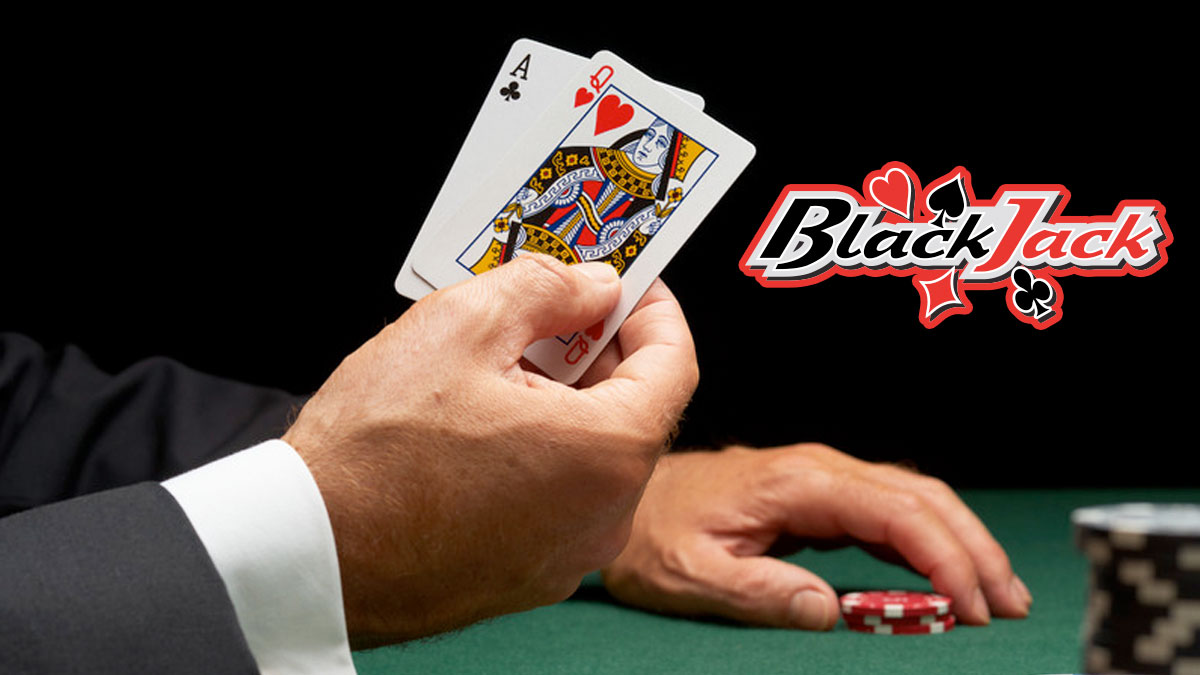Blackjack is one of the simplest table games casinos offer and also one with the best odds, making it a favorite of many gamblers. It’s a basic game of skill, which means players have some control over the way their hand plays out. If you follow basic strategy, count cards, and play the game correctly, you can even swing the slight advantage casinos have into your favor.
The gameplay is relatively basic to understand. Additionally, the game itself is enjoyable and requires gamblers to tactfully navigate their way through each hand. Don’t be discouraged from playing if you’ve never sat down at a blackjack table before.
Here is how a standard blackjack hand plays out.
The Blackjack Table
Casino floors are littered with blackjack tables with varying minimum and maximum betting limits designated by a sign on the table. The dealer stands in the center of the table while gamblers sit in a semicircle around the dealer. The importance of the position you occupy varies between players. However, the person who sits on the far left will play last in the “third base” position. If you’re unfamiliar with the rules of blackjack, avoid playing third.
Each spot at the table will have a spot where gamblers can place their bets. When placing a bet, stack your chips and put your bet on the table in the designated area. Dealers will let you know if you’re making a mistake placing your bet, but it’s good to get off on the right foot at a new table.
The Blackjack Deal
Once all bets are made, the dealer deals each player two cards face up and deals two cards to himself, one face up and one face down. The top card the dealer is showing is crucial to your betting decisions going forward, which will be discussed in a later post.
In real money blackjack, the cards you are dealt compete against the cards the dealer holds in their hands. By only showing one card, the house leaves uncertainty as to what card is under the dealer’s top card. During the deal and for the rest of the hand, do not touch your bet. Dealers are always looking out for gamblers who try to cheat the system and add chips after the deal.
Signaling Blackjack Bets
Following the deal, you will have the opportunity to analyze all the cards on the table to decide your strategy for the rest of the hand. You can choose to make several moves based on your cards, fellow players’ cards, and, most importantly, the one card the dealer is showing.
To signal a stand, a gambler should make a gesture with their hand in a cutting motion across the face of the cards. While it may seem like merely saying “stay” or “stand” is sufficient, casinos insist gamblers signal to eliminate confusion.
Arguments frequently occur when players insist they opted to stay on a hand but were dealt an extra card or vice versa. By signaling, gamblers definitively show what their desired play is.
To hit, you should tap the table in a sliding motion behind your cards. Once again, make sure not to touch your bet while you signal your play. If you don’t bust on the first hit, continue to signal in the same way until you are happy with your hand, or you bust.
Doubling Down in Blackjack
Outside of the basic moves, you can also double down on a bet or split your hand if your two cards have the same value. Both moves add excitement to the hand but should only be used under certain circumstances.
When doubling down, gamblers place an additional bet equal to the amount of the initial bet. To double down, place your bet next to your initial bet, which signals to the dealer your intention to double your bet. While deciding whether to double your bet, be mindful that you will only receive one more card.
Other factors will come into play when you decide to double down or not. As is the case with most facets of the game, doubling down should be done strategically.
A good rule of thumb is to double down on a hard 9 or 10, and when you have a soft 16, 17, or 18. (The term “soft” refers to situations when you are dealt an ace that can be used as a 1 or an 11.)
One of the most exciting situations in blackjack (outside of hitting a blackjack, of course) is to double down on an 11. If you are dealt an 11, and the dealer is showing a weak card, double the bet. The odds of hitting 21 after doubling down on an 11 are pretty good.
Splitting Your Hand in Blackjack
If you are dealt two cards with identical values, or a pair, you have the opportunity to split your bet. The strategy associated with deciding when to split or not, like most aspects of the game of blackjack, can vary based on the strategy with which you approach each hand.
To split your hand, you need to place another bet on the second card while signaling to the dealer. When you are deciding which hands to split, keep a few basic rules in mind. Blackjack players should always split aces and eights regardless of the card the dealer is showing. However, you should never split fours, fives, or 10s because you will most likely be left with two terrible hands.
Newer gamblers shouldn’t overwhelm themselves with strategy at the outset of their gambling career. Overthinking hands can lead to poor decisions and subsequent losses. When deciding to split a hand, a lot rides on the card the dealer is showing. If you feel overwhelmed and confused, ask the dealer what the book says to do.
Playing Blackjack Against the Dealer
Unlike real money poker, where you’re competing with the other players, the only person you are playing against is the dealer, so don’t devote too much energy on the cards your fellow gamblers are dealt. After everyone at the table has placed their final bets, the dealer will flip their card that is face down and play their hand.
How to appropriately play against the dealer’s face-up card will be addressed in a later post due to its complexity. The card the dealer is showing is arguably the most crucial aspect of blackjack and should dictate your bets. For the time being, all you need to know is that most casinos make their dealers stand on hard 17s and hit anything below a 16.
Getting Paid Out When You Win
Unless you hit a blackjack, your fortunes rest with the dealer’s hand. Blackjack typically pays off 3:2, but like the table stakes, the payout can vary from table to table. Once the dealer flips the card that is face down, they play that hand based on house rules. Once again, most dealers must stay on a hard 17 and hit a 16 or below.
If your hand busts, the dealer will claim your bet for the house, but if your hand beats the dealer’s hand, you win. The dealer will issue your winnings, and after the hand is complete, you can choose to add your chip to your stack or your subsequent bet.
After the hand, claim your winnings and reset for the next hand. The best gamblers have a short-term memory and don’t let wins and losses impact the way they approach the next hand. Stick to your blackjack strategy and play by the book regardless of the outcome of the previous hand.
Conclusion
Blackjack is arguably the most enjoyable table games at casinos due to its simplicity and the control gamblers have over the results. Despite the variance between payoff amounts and table stakes, the gameplay is consistent between casinos. The strategy you approach the game should be consistent and will develop the more you play.
If you feel overwhelmed with the nature of blackjack that is simultaneously monotonous and fast-paced, the game might not be right for you. With these tips, you will be able to handle the different aspects of the game, and hopefully, if you play according to basic strategy, beat the house.
Michael Stevens
Michael Stevens has been researching and writing topics involving the gambling industry for well over a decade now and is considered an expert on all things casino and sports betting. Michael has been writing for GamblingSites.org since early 2016. …



